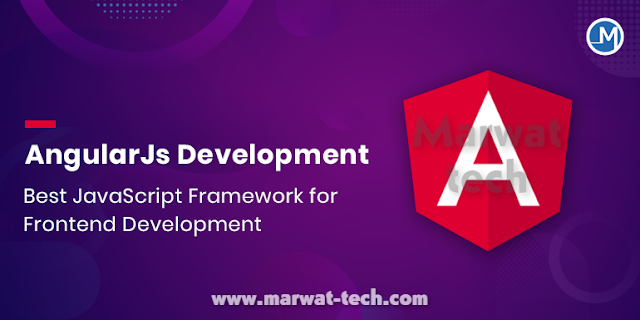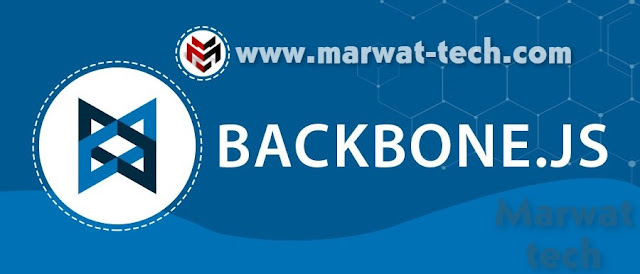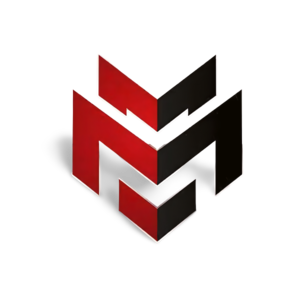JavaScript libraries and frameworks are pre-written code that can be used to perform common tasks and simplify development. They are used to add functionality to JavaScript projects, such as creating interactive user interfaces, handling data and network requests, and building complex web applications.
Some popular JavaScript libraries and frameworks include:
- jQuery: A popular library that simplifies HTML document traversing, event handling, and animation.
- React.js: A library for building user interfaces, particularly for single-page applications.
- Angular.js: A framework for building web applications, providing a powerful set of features for creating dynamic, interactive user interfaces.
- Vue.js: A framework for building user interfaces, similar to React and Angular, but with a simpler and more approachable syntax.
- Node.js: A JavaScript runtime for building server-side applications, commonly used for building web servers and back-end services.
- Express.js: A minimal web application framework for Node.js, often used for building APIs and web servers.
- Next.js: A framework for building server-rendered React.js applications, with built-in support for server-side rendering, static site generation, and code splitting.
- Ember.js: A framework for building web applications, designed to make it easy to create ambitious web applications.
- Backbone.js: A lightweight framework for building web applications, providing a structure for client-side code and a set of helpful functions for working with data and views.
- Svelte.js: A lightweight framework for building user interfaces, with a unique approach to building reactive user interfaces.
These are just a few examples of the many JavaScript libraries and frameworks available. The best one to use will depend on the specific requirements of a project, as well as the developer's experience and preferences.
jQuery:-
 |
| jQuery |
jQuery is a popular JavaScript library that simplifies the process of writing JavaScript code. It was created in 2006 by John Resig and is now maintained by a team of developers. jQuery makes it easier to traverse and manipulate the Document Object Model (DOM), handle events, create animations, and perform other common JavaScript tasks.
Some of the key features of jQuery include:
DOM manipulation: jQuery provides a simple and powerful API for selecting and manipulating elements in an HTML or XML document.
Event handling: jQuery makes it easy to handle events such as clicks, hovers, and form submissions in a cross-browser compatible way.
Animations and effects: jQuery provides a variety of built-in animation and effect methods that can be used to create smooth and engaging user interfaces.
AJAX: jQuery provides a simple and powerful API for making asynchronous HTTP requests and working with JSON data, making it easy to create dynamic and interactive web applications.
Plugins: jQuery has a large and active community that has created a wide variety of plugins that can be used to add new functionality to a project.
jQuery is widely used and supported by a large community of developers, and is compatible with most major browsers. It is often used in conjunction with other JavaScript libraries and frameworks, such as Angular and React.
It should be noted that because of the rise of more modern front-end frameworks and libraries that provide similar functionality, jQuery usage has decreased in recent years, but is still widely supported and used by many developers and companies.
React.js
 |
| react js |
React.js is a JavaScript library for building user interfaces. It was developed and is maintained by Facebook. React allows developers to build complex UI using a component-based architecture, where each component is a self-contained piece of code that manages its own state and can be easily reused throughout the application. React also uses a virtual DOM, which optimizes updates and improves the overall performance of the application. It is widely used in web development and has a large developer community and ecosystem.
Angular.js
 |
| Angular.js |
Angular.js is a JavaScript framework for building web applications. It was developed and is maintained by Google. Angular uses a component-based architecture and a declarative approach to building user interfaces, which allows for better organization of code and easier maintenance. It also uses a two-way data binding system, which allows for automatic updates to the view whenever the model changes, and vice versa. Angular has a powerful set of built-in directives and services that can be used to easily add functionality to an application, and has a large developer community and ecosystem. It has been succeeded by Angular 2 and later versions.
Vue.js
 |
| Vue.js |
Vue.js is a JavaScript framework for building user interfaces. It was created by Evan You and is now maintained by a group of open-source contributors. Vue uses a similar component-based architecture as React and Angular, but it also has a template-based syntax that allows for easier integration with existing projects. It also uses a reactivity system that allows for automatic updates to the view whenever the underlying data changes. Vue also has a smaller footprint compared to other frameworks like Angular and React, making it more suitable for smaller projects or projects with limited resources. Vue has a growing developer community and ecosystem, with a lot of tools and libraries that can be used to easily add functionality to an application.
Node.js
 |
| Node.js |
Node.js
 |
| Node.js |
Node.js is a JavaScript runtime built on Chrome's V8 JavaScript engine. It allows developers to run JavaScript on the server-side, enabling the creation of server-side and networking applications using JavaScript. Node.js uses an event-driven, non-blocking I/O model, which makes it lightweight and efficient for real-time applications, like chat, gaming, stock market, and other data-intensive applications. Node.js also has a large and active open-source community and ecosystem, with a wide variety of packages and modules available through npm (Node Package Manager), which makes it easy to add functionality to an application. Node.js is often used in combination with JavaScript frameworks such as Express.js, Koa.js and Meteor.js to create web applications and APIs.
Express.js is a minimal and flexible Node.js web application framework that provides a robust set of features for web and mobile applications. It is built on top of Node.js and allows developers to easily create server-side applications and APIs. Express provides a routing system that allows for the handling of HTTP requests and responses, and has built-in middleware for handling common functionality such as parsing request bodies and handling cookies and sessions. It also has a lot of third-party middleware available that can be easily integrated to add functionality like handling authentication, validation and more. Express is widely used and has a large developer community and ecosystem, making it a popular choice for building web applications and APIs on top of Node.js. Express is often used as a foundation for building web applications and APIs with popular front-end frameworks like React, Angular and Vue.js, and it supports various protocols like HTTP and HTTPS, and also can be integrated with websockets, GraphQL and many more.
Next.js
 |
| Next.js |
Next.js is a JavaScript framework for building server-rendered React applications. It is built on top of React and Node.js and provides a set of features for creating production-ready applications, such as automatic code splitting, server-side rendering, and static site generation. Next.js allows developers to easily create high-performance React applications by handling the setup and configuration of the development environment, and also provide a powerful developer experience with features like hot-reloading and an integrated development server. Next.js also has a built-in development-only performance optimization feature called dynamic imports, which allows to load only the components that are needed for a specific page, resulting in faster initial load times and lower bundle sizes. Next.js has a growing developer community and ecosystem, with a lot of plugins and modules available that can be easily integrated to add functionality to an application. It is well suited for building SEO-friendly, high-performance React applications and static sites.
Ember.js
 |
| Ember.js |
Ember.js is a JavaScript framework for building web applications. It is built on the principles of convention over configuration, which means that it provides a set of conventions and best practices for building web applications, and allows developers to focus on the business logic of the application rather than the low-level details of the framework. Ember is opinionated framework and it follows the "Convention over Configuration" principle, this means that it has a set of conventions and best practices to structure the application, routing, and file organization. Ember provides a powerful set of features such as a built-in templating engine, two-way data binding, a component-based architecture, and a powerful command-line tool called Ember CLI that makes it easy to create, test and deploy Ember applications. Ember has a relatively smaller developer community when compared to React, Angular, and Vue but it's still widely used by many big companies like LinkedIn, Netflix, and Microsoft. Ember is well suited for building ambitious web applications with complex requirements and it has a stable API, good performance and it's easy to scale.
Backbone.js
 |
| Backbone.js |
Backbone.js is a JavaScript framework that provides a lightweight and flexible structure for building web applications. It was created by Jeremy Ashkenas and is now maintained by a group of open-source contributors. Backbone provides a minimal set of features, such as a model-view-controller (MVC) architecture, event-driven communication between views and models, and an API for making RESTful requests to the server. Backbone does not provide a lot of built-in features for things like templating, routing, and other common functionality. Instead, it gives developers a set of building blocks to work with, and leaves the implementation of additional functionality up to the developer. This makes Backbone a good choice for developers who want to build web applications with a high degree of flexibility and control over their application's architecture. Backbone has a relatively small developer community compared to newer frameworks like React and Angular, but it still has a loyal following and is still widely used in many web applications.
Svelte
 |
| Svelte |
Svelte is a JavaScript framework for building user interfaces. It is different from other frameworks like React, Angular and Vue.js in that it does not use a virtual DOM, instead, it utilizes a compile-time approach to turn your components into efficient JavaScript code. Svelte compiles your components into highly optimized JavaScript during the build process, which means that there is no runtime overhead when your code runs in the browser. This makes Svelte very lightweight and fast. Svelte provides a simple and minimalistic syntax for building components, similar to writing plain JavaScript and HTML, which makes it easy to learn and use. It also has a small learning curve, which makes it easy for developers to start building web applications quickly. Svelte also has a growing developer community and ecosystem, with a lot of libraries and plugins available that can be easily integrated to add functionality to an application. Svelte is a good choice for building web applications with high performance and low bundle size, it's also good for building small to medium size web applications with a small team.
Conclusion:
It's difficult to say which JavaScript framework is the best as it depends on the specific requirements of your project, your team's skills and experience, and the resources available to you.
It's important to evaluate the different options based on the specific needs of your project, and the skills and experience of your team. It's also important to consider the resources available to you, such as time, budget, and support. It's also worth to mention that some frameworks have a larger developer community and ecosystem, which can make it easier to find solutions to problems and hire developers with experience in that framework. In general, it's best to try out different frameworks and see which one fits best with your project's requirements, team, and resources.











Post a Comment